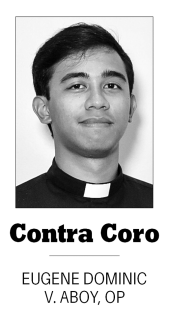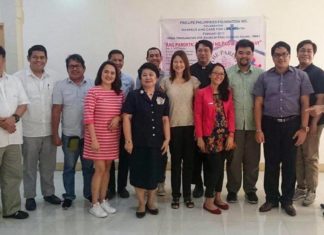THE ATROCIOUS murder of George Floyd at the hands of Minneapolis police officers spurred protests worldwide and has reignited the Black Lives Movement (BLM) in the West. While some denounced the incident through peaceful means, others have resorted to violent protests and destruction of private property, increasing tensions amid the Covid-19 pandemic.
Unsurprisingly, one of the favorite targets of these protesters have been religious figures. On June 20, the statue of St. Junipero Serra, ironically a human rights activist for the Native Americans, was torn down and vandalized by activists. Similar instances have followed since, from religious icons being defaced to clergy and lay faithful getting mugged during prayer vigils. These incidents are exacerbated by speeches made by the likes of BLM leader Shaun King who said that all white European statues and stained-glass windows “should also come down.”
It’s funny that Mr. King, who champions himself as a civil-rights activist, seems to be oblivious of the fact that the rights and privileges which he is enjoying came from the very institution that he regards as a “form of white supremacy.” He fails to realize that the concept of inherent freedom and the inviolable dignity of the human person primarily finds its roots in a Judeo-Christian worldview propagated by what he has labeled as “privileged white supremacist,” and which he so readily seeks to eradicate.
Not disregarding the fact that the Church has its own share of injustices and misdeeds throughout its history, it cannot be denied that it has also contributed by and large to the modern conviction that “all people are created equal.” For one, the Franciscan friar St. Junipero Serra who Mr. King approved of destroying “made heroic sacrifices to protect the indigenous people of California from their Spanish conquerors” by walking to Mexico and back, with an injured leg, to obtain special faculties from the Viceroy of Spain just to discipline the military who were committing unimaginable cruelty to the natives.
Before any institution articulated the universality of human rights, the Spanish Dominican missionaries Antonio de Montesinos and Bartolome de las Casas already advocated for the protection of the indigenous race in the New World, even if this meant going against the colonial powers during their time. De las Casas, who is considered one of the pioneers of the concept of universal human rights and human dignity, recounted Montesinos’ words to the colonizers: “Aren’t they human beings? Have they no rational soul? Aren’t you obliged to love them as you love yourselves?”
It is easy for us who are reaping the fruits of our ancestors’ work to be suspicious and even resentful of what they have handed down to us. Seeing the state of our world in disarray, our first instinct is to curse and blame the old institutions who weren’t able to do anything in order to fix the problems that we are now forced to resolve. Problems of inequality and injustice still arise, and it may be true that these have been perpetuated by the system either by incompetence or sheer malevolence.
It must be emphasized here, however, that majority of BLM advocates are sincere in their pursuits and acknowledge the fact that peaceful protest, and not violence, is the correct response to injustice. To them, I say, more power. But let us beware of the true colors of those who employ such movements as guise to further their malicious schemes and simply inflict violence on any opposition they deem as the enemy.
As history again and again proves, activism without knowledge of the facts ultimately leads to a pile of rubble and body-bags. A movement that has utter disregard for reality and shameful indifference to the most basic stage of human life even in the womb is an empty slogan. Before we start toppling down monuments and demolishing age-old establishments, let’s pause for a while and see whether or not our actions are only replacing the terrors that we seek to supplant. Before heading to the streets, do your homework.












